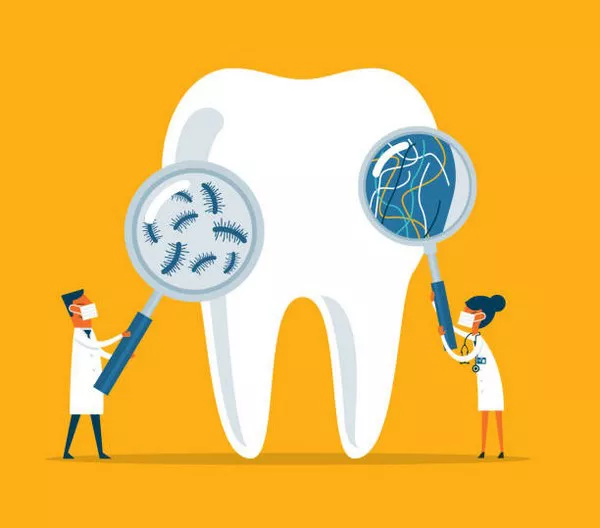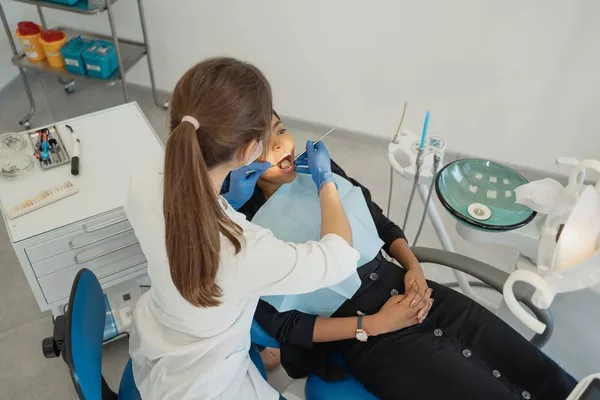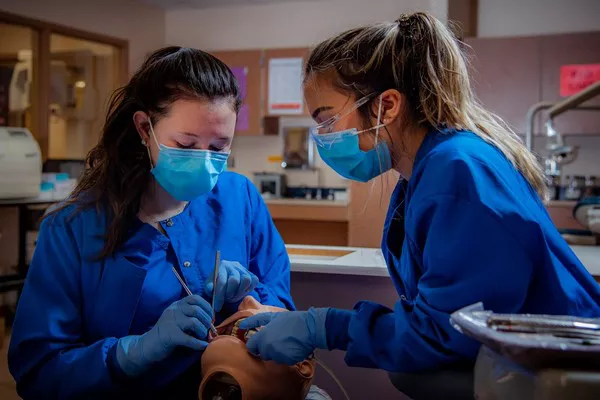Gum disease, also known as periodontal disease, is a common condition that affects the tissues surrounding the teeth. It typically begins with the inflammation of the gums (gingivitis) and can progress to more severe forms if left untreated. Moderate gum disease, often referred to as periodontitis, is a stage where the condition has advanced beyond mild inflammation but has not yet caused significant damage to the bone and connective tissue supporting the teeth.
Causes and Symptoms
Moderate gum disease is primarily caused by the buildup of plaque, a sticky film of bacteria that forms on the teeth. When plaque is not effectively removed through proper oral hygiene practices such as brushing and flossing, it can harden into tartar (calculus), leading to irritation and inflammation of the gums. Other factors that can contribute to gum disease include smoking, hormonal changes, certain medications, and underlying health conditions like diabetes.
Common symptoms of moderate gum disease include:
Gum inflammation: Swollen, red, or tender gums are often the first signs of gum disease.
Bleeding gums: Gums may bleed during brushing or flossing, indicating the presence of inflammation.
Persistent bad breath: Also known as halitosis, this can result from bacteria accumulating in the mouth due to gum disease.
Receding gums: The gums may pull away from the teeth, exposing the roots and creating pockets where bacteria can thrive.
Loose or shifting teeth: As gum disease progresses, the supporting structures of the teeth may weaken, leading to mobility or changes in tooth alignment.
Reversibility of Moderate Gum Disease
The good news is that moderate gum disease can often be reversed, especially with prompt intervention and appropriate treatment. However, the reversibility of gum disease depends on several factors, including the stage of the disease, the effectiveness of treatment, and the individual’s commitment to oral hygiene.
Factors Influencing Reversibility
Stage of the Disease: In the early stages of moderate gum disease, when the damage is limited to inflammation and minor gum recession, it is more likely to be reversible. However, as the disease progresses and the supporting structures of the teeth become more compromised, reversing the damage becomes increasingly challenging.
Timely Treatment: Seeking professional treatment as soon as symptoms of gum disease appear can significantly improve the chances of reversing the condition. Early intervention can help prevent further deterioration of the gums and underlying bone.
Overall Oral Health: Maintaining good oral hygiene habits, such as regular brushing, flossing, and routine dental check-ups, can support the reversal of gum disease. Additionally, addressing any contributing factors like smoking or underlying health conditions can aid in the treatment process.
see also: How Do You Stop Periodontal Disease?
Treatment Options
Professional dental treatments play a crucial role in managing moderate gum disease and promoting its reversal. Some common treatment options include:
Scaling and Root Planing: This deep cleaning procedure involves removing plaque and tartar from below the gum line and smoothing the root surfaces to encourage gum reattachment and reduce bacterial buildup.
Antibacterial Therapy: In some cases, antibiotics or antimicrobial rinses may be prescribed to control infection and promote healing.
Surgical Interventions: In advanced cases of gum disease where non-surgical methods are insufficient, surgical procedures such as flap surgery or bone grafting may be necessary to repair damaged tissues and restore gum health.
Laser Therapy: Laser technology can be used to remove infected tissue and disinfect periodontal pockets, promoting healing and reducing inflammation.
Role of Dental Healthcare Professionals
Dental healthcare professionals, including dentists and dental hygienists, play a crucial role in the management of gum disease. They can provide personalized treatment plans tailored to the individual’s needs, monitor the progression of the disease, and offer guidance on proper oral hygiene practices. Regular dental visits allow for early detection of gum disease and timely intervention to prevent further damage.
Home Care
In addition to professional treatment, practicing good oral hygiene at home is essential for controlling and potentially reversing gum disease. Some tips for home care include:
Proper Brushing: Brush teeth at least twice a day using a fluoride toothpaste and a soft-bristled toothbrush. Be sure to brush along the gumline and on the surfaces of the teeth.
Flossing: Clean between teeth daily using dental floss or interdental brushes to remove plaque and food particles from areas that are difficult to reach with a toothbrush.
Antiseptic Mouthwash: Rinse with an antiseptic mouthwash to help reduce bacteria and plaque buildup, especially in areas where brushing and flossing may not reach.
Preventive Measures
Regular dental check-ups and cleanings are essential for preventing the progression of gum disease. During these appointments, dental professionals can assess the health of the gums, remove plaque and tartar, and provide guidance on maintaining optimal oral hygiene. Early detection of gum disease allows for prompt intervention and increases the likelihood of successful treatment.
Lifestyle Factors
Certain lifestyle changes can improve oral health and support the reversal of gum disease. These include:
Quitting Smoking: Smoking is a significant risk factor for gum disease and can hinder the effectiveness of treatment. Quitting smoking can improve gum health and reduce the risk of complications.
Balanced Diet: Eating a balanced diet rich in fruits, vegetables, lean proteins, and whole grains provides essential nutrients for gum health and overall oral health.
see also: How much does delta dental pay for wisdom teeth removal?
When to See a Dentist
It’s crucial to seek professional dental care if symptoms of gum disease are present, such as bleeding gums, persistent bad breath, or changes in the appearance of the gums. Early intervention can help prevent the progression of the disease and improve the chances of successful treatment.
Long-Term Management
Managing gum health is an ongoing process that requires commitment to proper oral hygiene and regular dental care. Untreated gum disease can lead to serious complications, including tooth loss, bone damage, and systemic health problems such as cardiovascular disease and diabetes. By adopting healthy habits and seeking timely treatment, individuals can maintain optimal gum health and reduce the risk of long-term consequences.
Conclusion
Moderate gum disease can be reversed with timely intervention, appropriate treatment, and diligent home care. Understanding the causes and symptoms of gum disease, seeking professional dental care, practicing good oral hygiene habits, and making lifestyle changes can all contribute to the successful management and potential reversal of gum disease. By prioritizing gum health and addressing symptoms promptly, individuals can maintain healthy gums and preserve their overall oral health and well-being.
FAQs about Gum Disease Reversal
1. When is it too late to reverse gum disease?
It’s generally considered too late to fully reverse gum disease once it has progressed to the stage of advanced periodontitis, where there is significant bone loss, deep periodontal pockets, and loose teeth. At this point, while the disease can be managed and its progression slowed or stopped with professional treatment and good oral hygiene, the damage already done to the supporting structures of the teeth (bone and gums) cannot be entirely reversed.
2. What stages of gum disease are reversible?
Gum disease, or periodontal disease, progresses through several stages, with the early stages being reversible:
Gingivitis: This is the earliest stage of gum disease, characterized by red, swollen gums that may bleed easily. Gingivitis is reversible with proper oral hygiene, including regular brushing, flossing, and professional dental cleanings.
Early Periodontitis: At this stage, the inflammation and infection begin to affect the bone that supports the teeth. While damage to the bone is minimal, early periodontitis can still be managed and potentially reversed with professional treatment and improved oral hygiene.
3. How long until gum disease is irreversible?
The timeline for gum disease to become irreversible depends on several factors, including oral hygiene practices, genetic predisposition, overall health, and frequency of dental visits. Gingivitis can progress to periodontitis in as little as a few months if left untreated. Once gum disease reaches moderate to advanced periodontitis, the damage to the bone and tissues supporting the teeth is generally considered irreversible. Early intervention and consistent oral care are crucial to prevent this progression.
4. Can stage 3 gum disease be reversed?
Stage 3 gum disease, also known as moderate periodontitis, involves more significant damage to the supporting structures of the teeth, including noticeable bone loss and deeper periodontal pockets. While the damage at this stage is more extensive and cannot be fully reversed, it can be managed and its progression halted with comprehensive periodontal treatment. This typically includes:
Scaling and Root Planing: Deep cleaning procedures to remove plaque and tartar below the gumline and smooth the root surfaces.
Antibiotic Therapy: To control bacterial infection.
Improved Oral Hygiene: Enhanced brushing and flossing techniques, along with regular dental visits.
Surgical Interventions: In some cases, surgical procedures may be necessary to reduce pocket depths and restore supportive structures.
You Might Be Interested In





























